
|
Scooped by
Karim Bouhajeb
onto Luxe 2.0 - Marketing digital - E-commerce |
Get Started for FREE
Sign up with Facebook Sign up with X
I don't have a Facebook or a X account

| Tags |
|---|
 Your new post is loading... Your new post is loading...
 Your new post is loading... Your new post is loading...
Karim Bouhajeb's insight:
DressX poursuit sa course. L’e-shop de mode exclusivement virtuelle annonce deux nouveaux projets, l’un dédié aux NFT, l’autre à une initiative physique, via une installation éphémère au Printemps. Lancée en 2020 par les deux Ukrainiennes Daria Shapovalova et Natalia Modenova, l’entreprise basée à Los Angeles vient de connaître une période compliquée avec la guerre en Ukraine, où elle a une partie de son équipe, qu’elle a finalement réussi à mettre à l’abri.
Karim Bouhajeb's insight:
Louis Vuitton’s triumph is attributed to its dynamic digital strategy, which included a series of longer-form video content on Douyin, generating over 2.5 million engagements in merely three months. The use of videos highlighted the brand’s diverse fashion categories and runway shows, resonating powerfully with its audience. Gucci came second, perhaps surprising many who speculated that Sabato de Sarno’s more muted style would fail to attract attention. However, this position underscores that Gucci remains the most relevant luxury brand in Shanghai and the second across all of Asia-Pacific. Miuccia Prada’s powerhouse status is again cemented with both Prada and Miu Miu moving up at number 4 and 13, respectively. This upward trajectory was also seen at Versace (12), Tod’s (15), Bottega Veneta (27) and Armani (24) in what seems to have been a good season for iconic Italian brands on Chinese socials. Though Hermès’ slight descent in the rankings stems from its recent venture into Xiaohongshu, industry experts believe the move is part of a planned expansion. This development, in concert with Dior’s foray into e-commerce with a mini-program, underscores a strategic shift by luxury giants to digitally evolve and court new consumers.
Karim Bouhajeb's insight:
Simplifier la vie des stylistes et accélérer le processus créatif en préservant à la fois la créativité et les compétences, c’est ce que propose AiDA. Cette IA est capable de générer « toutes les combinaisons possibles » à partir d’éléments de design (imprimés, motifs, couleurs, croquis) grâce à la reconnaissance d’image. Charge au styliste ensuite de faire le tri pour retenir les meilleures propositions… Basées sur des algorithmes, les IA génératives ont recours à la data. Elles peuvent compiler très rapidement une multitude d’images et de données collectées en ligne pour créer de nouveaux contenus à partir d’un simple script (« prompt« ). Les perspectives sont alléchantes, mais il y a tout de même quelques inconvénients…
Karim Bouhajeb's insight:
With TikTok boasting over 1 billion monthly active users and Douyin claiming 750 million, the ByteDance-owned short-form video apps are eclipsing their competitors. But mastering the two platforms is a delicate dance. Douyin, China’s equivalent of TikTok, is emerging as a powerful force in its own right across the mainland, with its own Chinese cultural nuances and local consumer preferences. To succeed on both channels, a copy-and-paste route isn’t an effective shortcut, emphasizing that they are two distinct entities that were created to serve different markets and audiences.
Karim Bouhajeb's insight:
Wanna, the Farfetch-owned augmented reality (AR) try-on platform founded last year, has expanded its VTO (virtual try-on) solution to handbags. After piloting its technology alongside Valentino last June, the company is scaling up its offerings as consumer demand for better e-commerce experiences swells.
Karim Bouhajeb's insight:
Setting the benchmark for online visibility, Paris Fashion Week drove exposure across China’s social media for participating brands, with livestreaming, official hashtags, and celebrity attendance boosting engagement. Overall, Chanel emerged as the leading brand among the top seven at PFW, which finished earlier this month. It generated a total of 1.058 billion tag views across social platforms Weibo, Xiaohongshu, and Douyin. This number combines both seasonal and always-on tag views.
Karim Bouhajeb's insight:
The Saudi government is striving to raise the ratio of non-cash transactions to 70% by 2025, up from 62% in 2023, in order to support economic growth and diversification. E-commerce sales are set to reach nearly $10 billion in 2025, up from $6.25 billion in 2022, according to Euromonitor. A testament to the kingdom’s booming online ecosystem, 74% of online shoppers are expected to shift from global to local e-commerce platforms. One of the region’s favorite luxury retail platforms is Dubai-based Ounass, which offers carefully curated edits of exclusive capsule collections from local and international designers, along with express delivery to those in Saudi Arabia and other Gulf countries. And that’s exactly what global luxury retailers have done to compete in the market. In 2017, Farfetch teamed up with Chalhoub Group, a leading partner for luxury brands across the Middle East, to open its first office in the region, roll out an Arabic-language website, and offer private client services in the region. It later partnered with Saudi Arabian retailer Rubaiyat to enhance its targeted offering for local shoppers.
Karim Bouhajeb's insight:
Chinese cosmetics brand Kans (韩束), known for its ‘Red BB cream,’ topped Douyin’s beauty brand list for 2023, with sales exceeding the 3 billion RMB ($417 million) mark. The label is continuing to blossom on the short video platform this year, once again topping Douyin’s January beauty list with outstanding results. According to data intelligence agency Chanmama Kans’ total GMV (gross merchandise value) reached $107 million (773 million RMB) last month, quadruple L’Oréal’s Douyin GMV for the same period. The result is not only Kans’ highest single month GMV on Douyin, but also the platform’s highest record for a beauty brand GMV in a single month. In January, the brand’s online retail channels performed very well: Kans’ GMV growth on Douyin hit 756% YoY, on Tmall it grew 570% YoY, on JD.com it was up 398%, on Vipshop it climbed 135%, and on Pinduoduo it rose 218%.
Karim Bouhajeb's insight:
With 63% of its population below the age of 30, Saudi Arabia is shaping up to be one of the world’s most critical Gen Z and Gen Alpha markets. This is a digitally-driven generation, with 46% of affluent 18 to 34-year-old Saudis predominantly purchasing luxury goods online. It is also a “generation of socialization," where shopping is a major pastime. While they adopt global trends and largely prefer European luxury brands, 95% of this cohort thinks it is important for brands to support and engage with Saudi-first enterprises and celebrate local design. This could look like offering localized collections or special seasonal offerings during Ramadan, the Islamic month of fasting. Young Saudis want to respect their culture and live their culture, but they want to be global, as they want to assimilate with the rest of the world.
Karim Bouhajeb's insight:
Reaffirming the maison’s bullish investment in emerging technologies, Louis Vuitton’s latest LV Diamonds fine jewelry collection has tapped the Aura Blockchain Consortium for its new digital certificates. These certificates trace the journey of each central stone from the mine to the finger, enabling owners of the brand’s latest diamond collection to access information such as the location of extraction and where each stone was sorted, polished, and set. Following the blockchain’s meteoric rise and subsequent fall from grace, organizations like the Aura Blockchain Consortium are desperate to win back consumer trust.
Karim Bouhajeb's insight:
Déjà adeptes des innovations digitales avec le Métaverse et les NFT, c’est sans surprise que les maisons de luxe se tournent avec enthousiasme vers l’IA générative. Attrait de la nouveauté, esprit créatif, volonté de rester attractives auprès des jeunes consommateurs hyper connectés… Les raisons ne manquent pas pour elles de s’intéresser aux nouveaux outils. Mais pour en faire quoi ? Il s’avère que l’IA générative pourrait bien être un compagnon très utile pour les marques de prestige. Elles y voient en effet l’opportunité de revenir à l’essence de leur métier : l’art de la création et de la relation client sur-mesure.
Karim Bouhajeb's insight:
Platforms like Roblox, Fortnite, and Minecraft have long empowered players to modify and personalize their experiences, turning passive users into active creators. The interactive model, where players shape the game's environment and narrative, mirrors a similar emerging dynamic in fashion. It also defines the types of experiences that younger generations will come to expect. The last decade's influencer marketing boom laid the groundwork for this shift. Influencers, harnessing platforms like Instagram and TikTok, have blurred the lines between consumer and creator, offering their own personal feedback and insights that directly influence brand strategies. Their role is a testament to the power of user engagement — they are not just marketing conduits but co-creators, shaping both product and presentation. This democratization of creation, vivid in gaming and influencer culture, is now finding its stride in fashion, signaling a future where consumers are integral to the creative process and echoing a broader societal shift towards participatory experiences.
Karim Bouhajeb's insight:
LVMH is reportedly in discussions with TikTok and its parent company, ByteDance Ltd., to address concerns about the sale of fake luxury products on the world’s top short video-sharing platform. The app is popular across all age demographics in selling and recommending “dupes,” a hashtag referring to cheaper, duplicate products that currently has 6,6 billion views. The trend is massively contributing to the issue of counterfeits, as recognized by the luxury conglomerate LVMH. From beauty products by Benefit to Louis Vuitton bags, many items sold by vendors on TikTok are actually counterfeits. This not only tarnishes the reputations of these luxury brands but also adversely impacts the sales of their official products. The French conglomerate has a similar deal in place with Alibaba. |
Karim Bouhajeb's insight:
On April 25, Levi’s released the first episode of its maiden Chinese-language podcast series titled Speaking with ‘Lee.’ As the denim giant dips its toes into this burgeoning medium in China, it marks a strategic, deeper foray into the hearts, and ears, of Chinese consumers. Other brands have also been exploring the podcast medium in a bid to engage consumers on a more cultural and intellectual level. Local labels like Neiwai, Maia Active, and Pop Mart have gone down this route. Of the global brands, Gucci, Coach, Lancôme, and Louis Vuitton have all launched digital podcasts on Chinese platforms like Ximalaya, Vistopia, and Xiaoyuzhou.
Karim Bouhajeb's insight:
The state of luxury multi-brand e-commerce in the West is a shambles. February 2024 saw Farfetch narrowly escape bankruptcy through a sale to South Korean giant Coupang in a pre-pack administration deal; by March, MatchesFashion had announced its shuttering. All the while, Richemont’s loss-making retailer Yoox-Net-A-Porter (YNAP) continues to search for a buyer. Meanwhile, in China, the largest global e-commerce platforms in terms of revenue — JD.com, Tmall, Taobao, and Luxury Pavilion — are thriving marketplaces for high-end brands. Over the past year, 56% of the mainland’s online luxury shoppers used JD.com for their purchases. E-tailer Tmall commands the largest market share in China, responsible for some 51% of all transactions on B2C platforms — consumers spend an average of seven minutes a day on the platform. These impressive statistics are the stuff of dreams for Western e-commerce players. A combination of decreased consumer loyalty, lack of brand support, unexciting customer journeys, and lack of personalized experiences have led to its demise. Also, there are too many Western retailers offering very similar services, just in different fonts. Luxury multi-brand stores served a purpose in the early days before the luxury sector had embraced e-commerce. But in the same way that luxury companies took back distribution from department stores, The same thing is happening to luxury multi-brand e-commerce retailers. Brands want direct interaction with their consumers, as shown by the success of auction house Phillips’ Dropshop service. Launched in summer 2023, the direct-from-artist sales platform is the first to partner directly with artists who are creating works specifically for it. If luxury e-commerce could follow a similar structure, perhaps it would benefit from the same level of enhanced customer loyalty and exclusivity.
Karim Bouhajeb's insight:
During this recent fashion month, over a dozen luxury brands livestreamed their runway shows from Paris, Milan, and London on Tmall. Balenciaga captured an audience of 1.4 million with its latest catwalk, complete with futuristic sunglasses and a cacophony of screens. Valentino, which also livestreamed its show, leveraged Tmall’s raffle feature to distribute exclusive gifts, attracting an impressive 23,000 participants. Other brands saw the number of followers and members of their Tmall stores surge by more than tenfold compared to average days, according to Alibaba.
Karim Bouhajeb's insight:
Gucci, an early proponent of the metaverse and Web3 tech, is expanding its digital playbook. On April 3, the Italian maison will unveil a new mixed reality experience via Apple’s widely buzzed Vision Pro. Headset users will be able to access an augmented edition of Who Is Sabato De Sarno? A Gucci Story, a short film featuring never-before-seen footage from De Sarno's debut Gucci Ancora show in September last year. The documentary originally aired on global streaming platform Mubi on March 15. As part of the activation, users will be able to curate their own virtual spaces and interact with 3D-products inspired by the Gucci Ancora showcase.
Le monde de la mode et du luxe multiplie les liens avec le monde du divertissement. Le groupe de luxe LVMH entend développer cette pratique et annonce la création de la société « 22 Montaigne Entertainment » chargée de la promotion de ses 75 Maisons via des partenariats avec les professionnels du divertissement et en ayant Hollywood […]
Via Jérôme MONANGE
Karim Bouhajeb's insight:
Online marketplace and sneakerhead hotspot StockX has released an immersive shopping app for Apple’s newly launched spatial computer headset, the Vision Pro. The experience allows consumers to browse StockX’s full product catalog using hand and eye movements, engage with real-time interactive market data, and shop user-uploaded outfits. With streetwear buffs and Web3 exponents sharing common ground, StockX’s move into spatial computing makes sense for the demographic. Collectors are continually seeking newness and innovation across the streetwear and sneaker scene; hosting an experience through a product as hyped as the Vision Pro feeds into the novelty factor of sneaker collecting and exclusivity. The opportunity for brands to create immersive apps for Vision Pro users is growing. In the first 10 days of its official launch, Apple sold over 200,000 units of the headset worldwide, despite its $3,500 price tag and divisively cumbersome appearance. As traditional e-commerce models find themselves becoming obsolete, the Vision Pro marks a new era for shopping.
Karim Bouhajeb's insight:
Since becoming the first Italian luxury fashion group to list on the New York Stock Exchange in December 2021, Zegna’s global “One Brand” repositioning as a leisurewear brand at the top end of the market is being expanded to China. Timed to coincide with the release of the Triple Stitch Secondskin Luxury Leisurewear Shoes last month, Zegna has curated a one-to-one immersive client experience in the VIP room of its Beijing flagship store. An exclusive cohort of VIP customers will be invited over two weeks to experience the epitome of Zegna service through personal interactions and elevated levels of customization. With personalization, a defining trend for luxury servicing in 2024 and beyond, Zegna is looking to integrate the brand into the lifestyles of its target consumers with exclusive localized experiences that money can’t buy. As the quiet luxury boom continues to sweep China, Zegna is in prime position to keep its lead in the luxury menswear sector as reflected in the Zegna Group's latest earnings.
Karim Bouhajeb's insight:
The social-media giant is making it easier for users to find inspirational images of people with similar hair, skin and body types as them, helping it attract Gen-Z consumers who are using shopping features on the platform at a higher rate than any other group.
Karim Bouhajeb's insight:
From luxury brands Gucci, Dior, and Louis Vuitton landing on Douyin, fast fashion retailer Zara introducing an innovative livestreaming format on the short video app, to Lululemon opening its official flagship store on the platform last week, TikTok’s counterpart in China is increasingly expanding its share of voice in the fashion industry.
Karim Bouhajeb's insight:
What draws a brand to Roblox over Fortnite? How can brands harness Zepeto’s rapid growth in the West? As blockchain-based metaverse destinations took a back seat last year, luxury’s biggest players charged ahead with establishing a presence in more lucrative domains, contributing to an uptick in growth across user-generated content (UGC) gaming hubs like Roblox and retail spots such as Emperia – in Q3 of 2023 alone, Geeiq recorded a 67% rise of new experiences in virtual platforms. As competition and consumer demand in these virtual environments swell, brand strategies and approaches are evolving. Comprising speakers from metaverse and gaming leaders including Atlas Creative, Dubit, and Sawhorse Productions, the webinar offered insights on the opportunities for brands in virtual worlds, which platform data brands are investing in, plus the industries set to dominate virtual worlds this year.
Karim Bouhajeb's insight:
Global duty-free shopping sales recovered strongly in December, growing 130 percent month on month. The Asia-Pacific region, where sales climbed +151%, led this expansion. Residents from Hong Kong, Taiwan, and Northeast Asia were major contributors to the recovery of sales across Asia-Pacific. Sales soared +231% in Japan, ranking it first among destination markets, followed by South Korea at +106%. Global in-store like-for-like sales attributable to Mainland Chinese shoppers climbed +82%. Many Chinese netizens are not used to communicating by email, or using the open web, and most brands in China operate a WeChat Mini Program. A separate travel retail program would potentially provide valuable data on travelers, increase consumer convenience, facilitate communication and boost brands’ ability to differentiate. LVMH-owned skincare label Fresh recently launched its travel retail WeChat Mini Program, dubbed “The Fresh Indulgent Voyage”. The app, enables shoppers to explore the Fesh travel retail world, including the brand story, product offerings, personalized services, and exclusive gifts. Plus, it offers an AI-powered skin analysis feature, a “Mask Finder” function, a space for KOL recommendations similar to Xiaohongshu’s explore page, and a livestreaming component.
Karim Bouhajeb's insight:
Unlike the majority of Gen Z (born between 1997 and 2012), this group of consumers was born in an era of iPhones (first released 2007) and iPads (2010), and has always had the likes of photo-sharing apps and advanced gaming tools at their fingertips. This familiarity with technology is influencing their perspective on the internet and technology as a whole. The main difference [between Gen Zers and Gen Alphas] is the approach to technology. While Alphas adopt an explorative, creative, innovative and enthusiastic approach to digital media consumption, Gen Z prioritizes security and privacy over newness and discovery. However, each generation has its own anxieties surrounding tech. Gen Zers have experienced the growth of social media into a universal phenomenon. Whereas, for their successors, internet domination is an ingrained part of life, for every age group, not only young demographics.
Karim Bouhajeb's insight:
Despite the growing acceptance of digital tools for designing and developing products, the incorporation of 3D technology into the fashion industry is progressing at a slower pace compared to sectors like automotive and product design. This slow adoption can be attributed to various factors inherent in the complexities of the fashion industry and its supply chain. However, there is a compelling argument suggesting that the conventional approach to fashion education, which centers on physical garment making, is failing to adequately address the knowledge gap related to screen-based 3D design and development. Digital fashion is transforming fashion, which, in turn, calls into question the body of skills and knowledge traditional fashion education considers appropriate for fashion designers. Many creatives are now embracing digital design to explore novel approaches to express their creative visions, and the fashion industry is recognizing the need to keep pace with digital natives. |

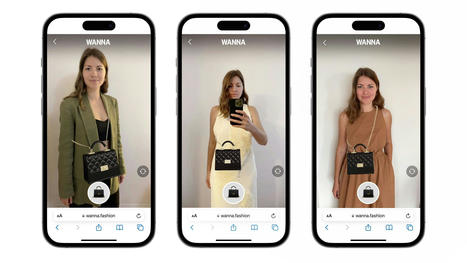



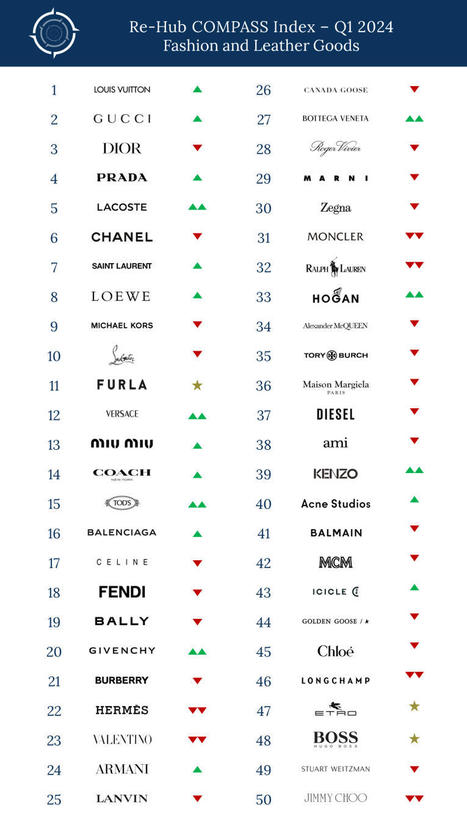
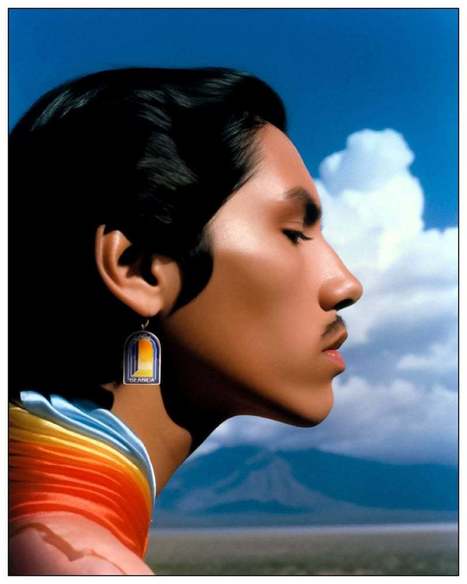
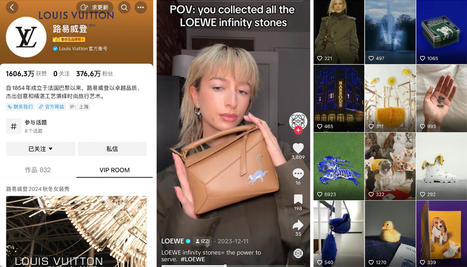

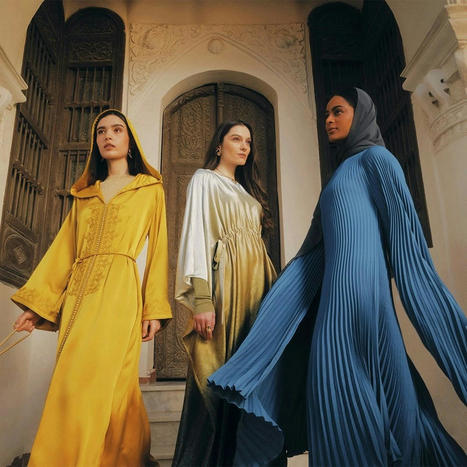



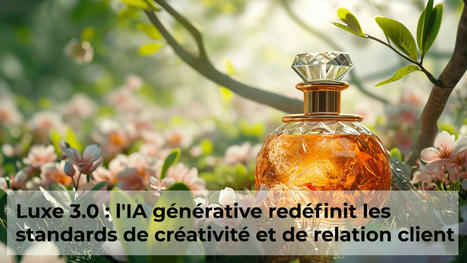


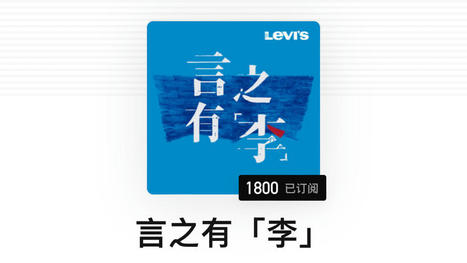
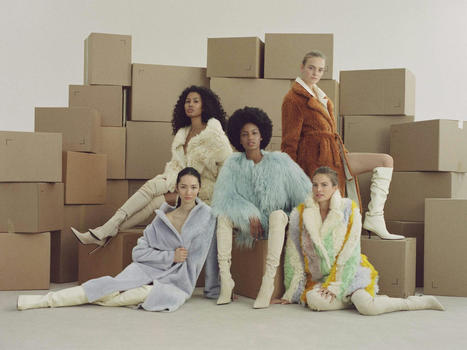



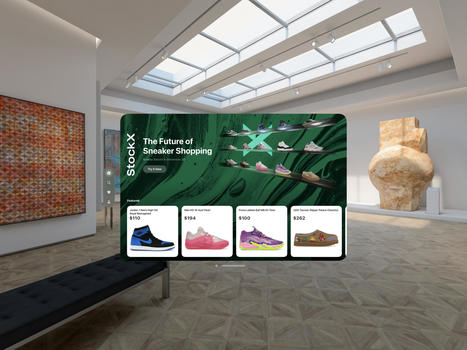

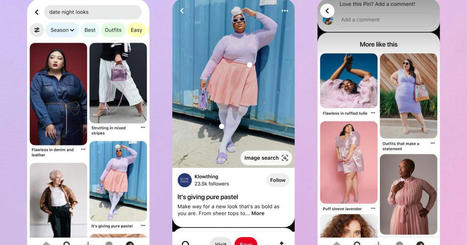


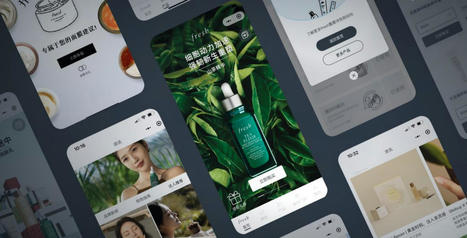

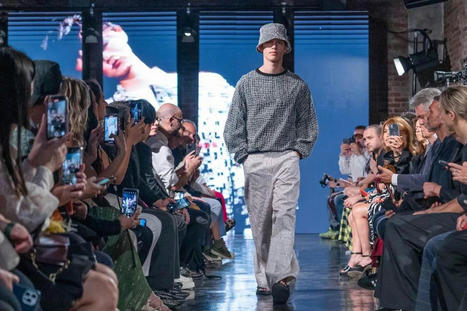





Wanna, the Farfetch-owned augmented reality (AR) try-on platform founded last year, has expanded its VTO (virtual try-on) solution to handbags. After piloting its technology alongside Valentino last June, the company is scaling up its offerings as consumer demand for better e-commerce experiences swells.